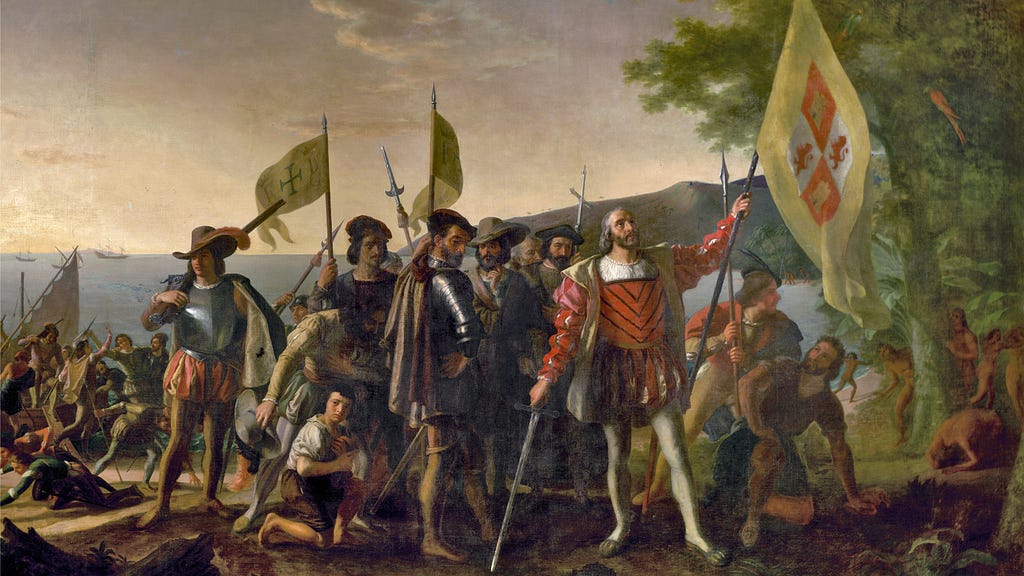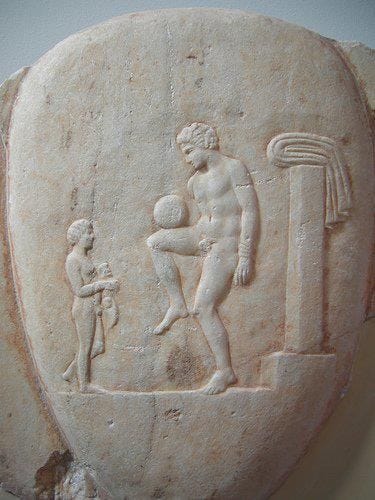This story is about my ongoing inquiry into lines.

This story is about my ongoing inquiry into lines.
Lines mark paths between points, establishing direction and boundaries. This is precisely what makes them dangerous.
We’re used to lines. They’re everywhere, slicing through our social fabric, carving up our identities & our very understanding of the world. These lines sort us into categories that feel real: republican | democrat, this cultural identity | that ethic group, haves | have-nots.
Some lines run deeper, their roots stretching back to our earliest attempts to make sense of a chaotic world. They echo our primordial need to classify: food | poison, friend | foe. We’ve been practicing drawing these lines for millennia, arguably since our Eurochristian-Judeo God first split humans from nature by telling Adam and Eve, “You’re off this land, separate from nature now. Start sweating for your food.” And from this original separation, man began synthesizing his own food, laboring and selling labor in a market, beginning to compete and to scale. This primordial man | nature division set the stage for other fundamental separations: mind | body, I | other. These aren’t just ideas, but fundamental ways we’ve learned to perceive reality.

Yet for all their apparent solidity, these lines — from the most every day to the most profound — are neither fixed nor inevitable. They’re stories we tell ourselves, convenient fictions that shape our world in ways we often fail to recognize. And in that recognition lies the seed of something else: the possibility of seeing beyond these lines, of embracing the messy, interconnected reality they’ve always failed to capture.
My rebellion against lines begins in the most eingefleischt (deeply ingrained, flesh-and-blood) of ways, through direct experience with a hyper-regimented design thinking initiative in healthcare. This project, focused on promoting worker health, was based on the Double Diamond framework.
There’s a seductive simplicity to lines: They orient us towards pre-determined paths, assuming a straightforward trajectory of progress. They divide complex, intertwined realities into artificial categories, obscuring how our challenges bleed into one another. They reduce our most wicked problems into manageable, but woefully inadequate, problem definitions, entrenching us further in the technē paradigm of making and intervention
As the limitations of this problem-solving approach became increasingly apparent, an additional paradox emerged: while striving to improve worker wellbeing (the project’s scope), the very team implementing the initiative was suffering from burnout. Yet our linear framework left little room to acknowledge or address these realities.
In fact, the project — considered successful for de-risking business directions — was a quintessential Pyrrhic victory.
![File:The pyrrhic victory of the Mulligan guards in Maine by Joseph Ferdinand Keppler (February 1, 1838 — February 19, 1894[1]) — an Austrian-born American cartoonist and caricaturist who greatly influenced the growth of satirical cartooning in the United States.](https://cdn-images-1.medium.com/max/1024/0*m9NVp9BnZybuxf_S.jpg)
It demonstrated not only the framework’s limitations but also its potential for instrumentalization for profit and control, creating a trickle-down loss affecting the problem-solvers, those they sought to help, and even the sponsoring institution itself.
This is what scholar Antti Tarvainen refers to as the future as a return to colonial mythologies.
“Colonialism under the cloak of newness”.

Managerialism’s Trojan Horse: The Double Diamond Phenomenon
Design researchers have attempted to theorize and conceptualize design practices for a long time but it wasn’t until the UK Design Council undertook the challenge of creating a framework to empirically define the design process that the double diamond, with its lines neatly separating project phases, emerged.

Practitioners voraciously adopted these models, aligning with a phenomenon design scholars Lucy Kimbell and Cameron Tonkinwise term managerialism — the pervasive belief in professional management’s value and the systematic rollout of its methods and practices.
Managerialism has penetrated diverse social contexts (public institutions, civic organizations, civil society), producing a specific form of techno-centric rationalism that privileges scientism. This leads to routine, dogmatic, and often inappropriate applications of scientific methods — essentially becoming a vehicle for articulating and realizing managerial priorities while suppressing nonconforming ways of being and knowledge-making.
Institutionalism, Universalism & Solutionism
This is how innovation theater plays out in broad strokes: institutionalism establishes a certain discourse through ‘expert’ knowledge and institutions, assumed to be universal — norms, assumptions, and knowledge are generalized to every situation, dismissing culture or context. Solutionism then aligns with this discourse, problematizing certain realities over others in modern organizations, always aiming to change existing situations into desired outcomes. Maya Chopra explores these dynamics in her thesis, “Counteracting Dominant Design Through Intersectional Feminist Thought,” revealing how this approach often overlooks cultural nuances and alternative perspectives.
Desirable to whom? In our sugar-saturated world, diabetes medications appear highly desirable and are certainly profitable — as is selling sugar. There’s a perverse synergy here: the more sugar consumed, the more diabetes medications needed. Step back, and you’ll see that prevention is infinitely more desirable than treating diabetes. Sadly, it’s rarely profitable (CMS is trying to change this by shifting healthcare from a fee-for-service model to one that rewards quality and outcomes, with mixed results. A topic in its own right).
These constructs — where manufactured desire eclipses fundamental, systemic improvements — become so ingrained they’re invisible, dismissed as facts of life. This is Heidegger’s concept of reification in action.
Peel back the layers of reification, and the dissonance hits you: design becomes paradoxically “sustainable and unsustainable, future-making and de-futuring, problem-solving and problem-creating,” as Sharon Prendeville and Mikko Koria aptly describe in their “Design Discourses of Transformation” piece for She Ji: The Journal of Design, Economics, and Innovation.
Power Games

To illustrate alternative ways of being and knowledge production, let’s consider an example from the late Nêgo Bispo, a Brazilian quilombola leader and philosopher who passed away in December of last year. (Quilombolas are Afro-Brazilian residents of quilombo settlements first established by escaped slaves in Brazil).
Bispo contrasts two forms of play: soccer and capoeira.
Imagine you’re in the bleachers of a modern-day soccer game, watching England vs France. Your favorite team is losing. Even if you have skills and tons of energy, you can’t jump over the barriers and join the game; the barriers are there to protect the game. The strict 90-minute clock ticks relentlessly, serving broadcasters and sponsors. What once was street play is now a tightly controlled spectacle. Rules are fixed, referees reign supreme, and you’re locked into passive spectatorship. Even the players can’t switch sides — everyone stays in their designated lines until the final whistle.
Soccer, ‘invented’ by colonizers, exemplifies linear thinking. It was played in China as cuju (蹴鞠) and Greece as episkiros long before it became FIFA’s proprietary game — a classic colonizer move of appropriation that erased many non-European histories and traditions associated with similar ball games.


Now consider a game created by non-linear thinkers: Capoeira.

Capoeira was invented by enslaved Africans in Brazil in the 16th century as a form of resistance. It combines martial arts, dance, and music. It is a circular form of technology that brings bodies into motion and “sintonia” (harmony, more or less). It strengthens bodies and increases self-understanding of one’s capabilities and those of other players (not opponents).
It creates coherence across multiple bodies inhabiting the same kinesthetic system, regardless of identities. It’s a “collective effervescence” (Durkheim) and non-scripted “spontaneous communitas” (Turner), uniting flow and play.
There’s no beginning or end, no winners or losers.
Practitioners can enter, exit, and create at will, in their own rhythm.
There are no sprints in Capoeira.
There’s no agenda.
The Capoeira circle is porous, allowing anyone to flow through it and bring new ideas.
There’s no DEI in Capoeira, because there is no line dividing people. Meaning: it’s not about inviting people to the room. There’s no room.
Capoeira embodies malícia, a playful wisdom thriving on surprise, misdirection, and adaptability.
You get to be upside down, seeing the world from a different perspective.
Every direction is possible.
No lines to follow.

When power wants you tired and compliant, Capoeira will build your strength. When society demands productivity, hustle, and effectiveness, Capoeira encourages deep listening. When the system glorifies lone heroes, Capoeira shows us that we’re stronger together.
Seeking Dis-order
This piece aims for disorientation.
Being in line implies facing the same direction as others and refusing out-of-line possibilities.
Direction isn’t casual; it’s organized.
Getting out of line and losing our politeness in following lines disrupts the repetition of following, allowing lines to disappear and new ways of being to emerge.
It’s a constant practice of not returning, of departing from; it is a practice because we gain new orientations through repeating unfamiliar patterns.
It’s a dangerous practice, and powerful too.
When dis-oriented, you enter what a ‘condition of possibility’ — a state where reified structures that shape our experience become visible and malleable. This opens up twin paths: finding your way in a world without lines, and feeling at home in an unfamiliar intellectual liminality. It sounds like heady work; but one reaches a point in life where snapping back to binaries becomes not just difficult, but problematic. This is innovation at its most fundamental — innovation of the self.
This piece protests its own linearity and the fact that it has an end. The quest for what I call a minimum viable softness in tech — expanding our circle of concern beyond rigid boundaries — has just begun.
If you could let one boundary become wobbly, which would it be?
Seeking a “Minimum Viable Softness” was originally published in UX Collective on Medium, where people are continuing the conversation by highlighting and responding to this story.

Leave a Reply